Environmental impact of amateur insect collections
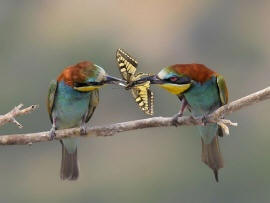
A single insectivore bird will kill hundreds of butterflies a week.
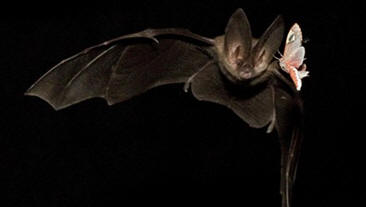
A single Eastern red bat (Lasiurus borealis) will typically kill 100 moths in a single night. If you are concerned about the environmental impact of my collecting, you needn't be. I am probably more passionate about butterfly conservation than you are. Yet, it is well established that amateur non-commercial collecting has precisely zero impact of butterfly populations. This may at first sound surprising, but consider the following. In my lifetime I will capture fewer butterflies than an insectivore bird will eat in a single season. I will capture fewer moths than a bat or a mercury vapor street light will kill in a single week. I will likely kill more butterflies by driving than by swinging my net. Butterflies have evolved to withstand enormous predation pressure, far beyond what amateur collecting can possibly create. Butterflies are indeed very vulnerable, but in an entirely different way. The real and terrible danger to Lepidoptera is habitat destruction and loss of caterpillar food plant. I take only a few specimens of every species. Development and agriculture kills butterflies by the billion, indiscriminately, and leaves them no chance to regenerate. Even benign activities can have disastrous consequences. For example, what is killing the beautiful Richmond Birdwing in Australia is a popular imported garden plant (Dutchman's pipe vine).
Unfortunately, conservation efforts are often misguided. Strict international laws protect a handful of
large and colorful adult butterflies, while the habitats that are vital to their survival are
left unprotected., For a few species, specimen trade is entirely prohibited, while much more good would
have come of encouraging their farming and responsible collecting with the involvement of local communities.
Smaller less flashy species receive no protection at all.
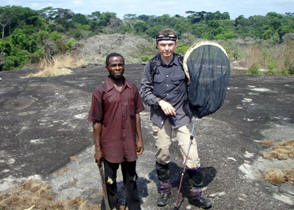
A physicist will collect at most 2-400 specimens a year. In doing so, he will travel to remote areas, supporting local communities.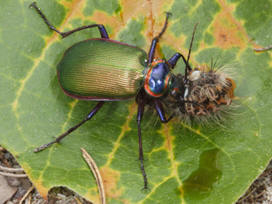
Beetles, spiders, parasitic wasps and birds will kill over 80% of all caterpillars. A few countries forbid collecting altogether, even outside national parks and even on private property. Ironically, these are often the very countries where a mismanagement of natural resources has already caused a natural catastrophe. The same governments that forbid collecting are often happy to yield to the pressure of agricultural multinationals, allowing the conversion of forests to farmland. The hypocrisy is appalling. One infamous case is Madagascar. 90% of the rain forest is destroyed. Worse: part of it is being "reforested" with eucalyptus trees. This is an invasive species that is totally incompatible with local life and kills everything around it. Madagascar forbids all collecting. That of course does nothing to save the island's unique biodiversity. Madagascar is perhaps the most environmentally ravaged place I have ever seen.

A physicist will collect at most 2-400 specimens a year. In doing so, he will travel to remote areas, supporting local communities.

Beetles, spiders, parasitic wasps and birds will kill over 80% of all caterpillars. A few countries forbid collecting altogether, even outside national parks and even on private property. Ironically, these are often the very countries where a mismanagement of natural resources has already caused a natural catastrophe. The same governments that forbid collecting are often happy to yield to the pressure of agricultural multinationals, allowing the conversion of forests to farmland. The hypocrisy is appalling. One infamous case is Madagascar. 90% of the rain forest is destroyed. Worse: part of it is being "reforested" with eucalyptus trees. This is an invasive species that is totally incompatible with local life and kills everything around it. Madagascar forbids all collecting. That of course does nothing to save the island's unique biodiversity. Madagascar is perhaps the most environmentally ravaged place I have ever seen.
But there are happy counter-examples too. One is French Guiana. 90% if the stunning rain forest is intact
and is strictly protected from being cut down. Insect collecting is not only legal, but has created an
entire industry of small jungle lodges catering to collectors. No butterflies are protected, but there
is no need: the healthy forest can provide much more than the hunters take. Of course, all this is properly
controlled and regulated. Permits are not cheap, but are straightforward to obtain. In countries like Ecuador
or Peru they go a step further. One is only allowed to collect with a local guide. For many locals this has
turned into a good business. They see the natural habitats they live near to as valuable sources of income
worth protecting, rather than just potential farmland acreage.
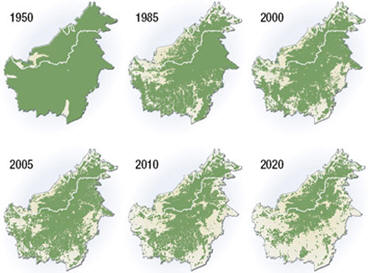
Deforestation of Borneo due to oil palm plantations. The oil palm is perhaps the greatest enemy of tropical butterflies today.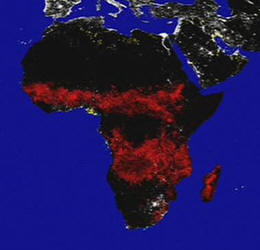
A satellite image of cumulative bush fires in Africa over one year. Each time, all butterflies, caterpillars and eggs in these areas are wiped out. You can compare my hobby to angling. Surely fishing, if done responsibly by a few enthusiasts who know what they are doing, can be an excellent hobby that does not harm the environment and even benefits it? Well, butterflies have far shorter life cycles (faster regeneration rate) than fish. Moreover, unlike an angler who is always happy to catch more of the same fish, a collector limits himself to just a few select specimens of each variety. Again: I never sell or trade any of the specimens I collect. Butterfly collecting, if done right, can also be an environmentally sound hobby.
The hobby is less of a pointless pastime than you may think. Amateur collections have actual scientific value. Of a particular importance is the genetic material that they carry. Field expeditions are often too expensive and too inefficient for professional entomologists to stage. Amateur collectors step up to fill the gap. I have provided specimens and specimen photos for several scientific publications by real entomologists. I have also donated my entire collection to my university, where it has become a part of its own huge scientific insect collection. As most university holdings, it is primarily built up from such private contributions.
If you care for the environment and wildlife, leave the eccentric physics professor with a butterfly net in peace. He is not doing any damage. Consider instead limiting deforestation, grazing of alpine meadows, corn farming, slash-and-burn agriculture, swamp development, air pollution, climate change, etc. And take notice the next time you will be scraping dead insects off the windshield of your car. Sadly, we get to do less and less of that lately. Incidentally, to blame are pesticides, not solid state physicists.

Deforestation of Borneo due to oil palm plantations. The oil palm is perhaps the greatest enemy of tropical butterflies today.

A satellite image of cumulative bush fires in Africa over one year. Each time, all butterflies, caterpillars and eggs in these areas are wiped out. You can compare my hobby to angling. Surely fishing, if done responsibly by a few enthusiasts who know what they are doing, can be an excellent hobby that does not harm the environment and even benefits it? Well, butterflies have far shorter life cycles (faster regeneration rate) than fish. Moreover, unlike an angler who is always happy to catch more of the same fish, a collector limits himself to just a few select specimens of each variety. Again: I never sell or trade any of the specimens I collect. Butterfly collecting, if done right, can also be an environmentally sound hobby.
The hobby is less of a pointless pastime than you may think. Amateur collections have actual scientific value. Of a particular importance is the genetic material that they carry. Field expeditions are often too expensive and too inefficient for professional entomologists to stage. Amateur collectors step up to fill the gap. I have provided specimens and specimen photos for several scientific publications by real entomologists. I have also donated my entire collection to my university, where it has become a part of its own huge scientific insect collection. As most university holdings, it is primarily built up from such private contributions.
If you care for the environment and wildlife, leave the eccentric physics professor with a butterfly net in peace. He is not doing any damage. Consider instead limiting deforestation, grazing of alpine meadows, corn farming, slash-and-burn agriculture, swamp development, air pollution, climate change, etc. And take notice the next time you will be scraping dead insects off the windshield of your car. Sadly, we get to do less and less of that lately. Incidentally, to blame are pesticides, not solid state physicists.